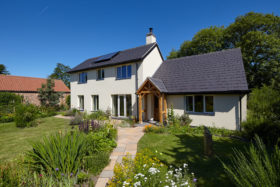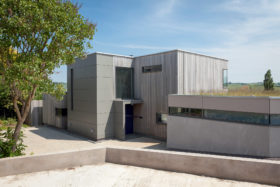
Learn from the experts with our online training course!
Use the code BUILD for 20% off
Learn from the experts with our online training course!
Use the code BUILD for 20% offBrickmaking is a time-honoured tradition in the UK.
The material has been used for home building for hundreds of years and many properties nationwide retain their original facades.
Thanks to the versatility of patterns and the different colours available, period bricks can add extra interest to a project. Plus, they aren’t necessarily limited to traditional-style buildings.
In the past, the UK had hundreds of brickworks that took their clay from local deposits. This produced units with distinct shades, textures and sizes, with clear regional identity. For example, the typical London brick colour is yellow, whereas versions from the midlands are normally red, due to the different components that exist in the c
These variations offer a unique character that isn’t always obvious in modern, often uniform units.
Nowadays, larger brickmaking companies are focused on mass-production. And − as many old brickworks have closed down − if you’re keen on a traditional-style brick, you may have to search for handmade units or opt for reclaimed versions.
A heritage look is also possible with new machine-made designs, so shop around to find something to suit your project.
Remember, not all modern homes need to have an ultra-contemporary facade. In some cases, you may need to comply with local planning restrictions and match the vernacular by using bricks of a similar blend. Alternatively, a more modern exterior could benefit from having a traditional brick feature.
Using a bespoke blend of colours presents a visually stunning display. Likewise, different bond arrangements, such as alternating the brick’s headers and stretchers (the short side and the long side) can create a pattern unique to your project – this can be something you design with your architect, or with the brickmakers.
Expert Q&AMichael Brown, Director of Northcot Brick, shares his tips for using period brickwork Are heritage bricks only suitable for use on period properties?Traditional bricks aren’t just for old buildings. An existing structure will naturally have its own surroundings and context, so perhaps only a narrow range or maybe just one brick type will look right. But for a new build, there’s a vast palette available (subject to planning constraints) and you can even create your own unique blend of size, colour, texture and bond pattern. Often, working in collaboration with your designer, an expert could visit your property or plot to see what the surroundings are, and then create a bespoke blend unique to your project. How can bricks be used to enhance the aesthetic of a home?There is a variety of ways! In many contemporary builds, brickwork is combined with modern materials, which offers a contrast between rustic units and smooth and shiny new elements, which looks really effective. You should also consider different bond options – you get more interest when you use both the header and the stretcher because you can mix things up. Due to different manufacturing techniques, the individual sides of the brick will look distinct, so if you build a wall that uses all of the surfaces available you’ll get far more variety. How can period bricks create a striking focal feature?The eye is naturally drawn to interesting locations in the home, like a fireplace. These can be enhanced by using decorative bricks; look into the various bonding patterns, like hit-and-miss brickwork, where you have holes in the wall and can look through it. You can use a contrasting unit to create arches, too, just be imaginative! What key practical considerations should be made when choosing bricks?Ensure the detailing does not allow the brickwork to stay saturated with water. This is typically an issue with bricks made abroad, which are crafted to different standards. They endure three or four cold and wet British winters, and all the faces start falling off – I’ve known people to have to take buildings down and rebuild. Another point people may not think of is how many sides of the brick has a usable face. It may only be one, but it could be up to six, which allows for more design features, and less wastage. Northcot’s bricks are routinely guaranteed to have four sides, but we can make bricks with up to six, which are more expensive. What should people budget for when looking into heritage bricks?An attractive machine-made brick can be bought for 50p. A handmade unit with an unusual size and colour might be £1.50. For unique shapes, sizes and mixtures, the price is higher, but these can make projects more attractive. |

